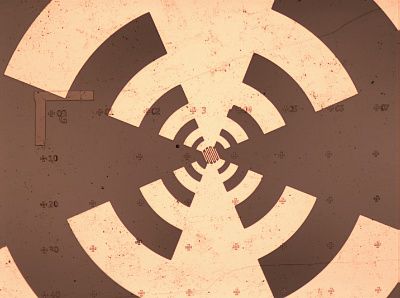With great power comes great laser science
Scientists found a way to compress ultrashort laser pulses, increasing its peak power to half a terawatt
It is a very unusual kind of laser: researchers at the photonics institute at TU Wien (Vienna) have built a device which emits ultrashort flashes of infrared light with extremely high energy. “It is very hard to combine these three properties – long infrared wavelength, short duration and high energy”, says Valentina Shumakova. “But this combination is exactly what we need for many interesting strong-field applications.”
Now the team has achieved a major breakthrough: By sending very energetic pulses in the infrared regime through a solid medium, the pulses can be compressed in time and space. The energy stays roughly the same, but it can now be deposited in an even shorter period of time, resulting in an incredible peak power of up to half a terawatt. This power corresponds to the output of hundreds of nuclear reactors. But unlike power plants, which produce the power steadily, the compressed laser pulse only lasts 30 femtoseconds (millionths of a billionth of a second).
Playing with Invisible Colours
“Under certain conditions, laser pulses can self-compress and become shorter. This is a well-known phenomenon in laser science”, says Audrius Pugzlys. “But until now, people used to believe that self-compression in solid media at extremely high intensities is impossible.”
Unlike the light of a simple laser pointer, an ultrashort laser pulse does not only have one specific colour. It is a mixture of a spectrum of different wavelengths – in this case centred around 3.9 micrometers, in the long infrared region, invisible to the human eye.
In vacuum, light always travels at the same speed, regardless of its wavelength. But this is not the case for light traversing a solid material. “The material causes some components of the laser pulse to move faster than others. If this effect is cleverly used, the laser pulse is compressed, it becomes shorter just by travelling through the material”, says Skirmantas Alisauskas.
This technique, however, is not always applicable. “If a pulsed laser beam of very high intensities is sent through a material, the beams tends to collapse chaotically into many separate filaments”, says Audrius Pugzlys. “It is like a bolt of lightning that spontaneously breaks up into various branches.” Each of the branches only carries a small part of the energy of the original beam, the resulting laser beam cannot be used for advanced strong-field laser experiments any more.
Breaking the filamentation threshold by four orders of magnitude
The Viennese research group, in collaboration with researchers from Moscow state university, has now identified conditions which lead to self-compression and an extremely high peak power without causing the beam to collapse into filaments. “As it turns out, we are dealing with two different length scales”, says Valentina Shumakova. “The length scale of the unwanted filamentation is longer than the length on which self-compression occurs. Therefore, it is possible to find a parameter regime in which the pulse is compressed but filamentation does not yet set in.” The power of the lase pulse is 10,000 times higher than the filamentation threshold – and still it does not collapse.
The team used an Yttrium aluminium garnet (YAG) crystal with a width of only a few millimetres – and the results are remarkable: By sending the laser pulse through the crystal, its duration decreases from 94 femtoseconds to a mere 30 femtoseconds. Its energy stays almost the same, and the power (energy per time) increases by a factor three, to almost half a terawatt. “As the pulse is very short, its extremely high power opens the door to many exciting experiments and maybe even to new technologies in laser science”, says Audrius Pugzlys.
Original publication
Other news from the department science

Get the analytics and lab tech industry in your inbox
By submitting this form you agree that LUMITOS AG will send you the newsletter(s) selected above by email. Your data will not be passed on to third parties. Your data will be stored and processed in accordance with our data protection regulations. LUMITOS may contact you by email for the purpose of advertising or market and opinion surveys. You can revoke your consent at any time without giving reasons to LUMITOS AG, Ernst-Augustin-Str. 2, 12489 Berlin, Germany or by e-mail at revoke@lumitos.com with effect for the future. In addition, each email contains a link to unsubscribe from the corresponding newsletter.




























































